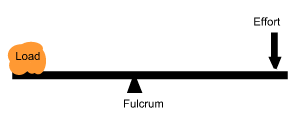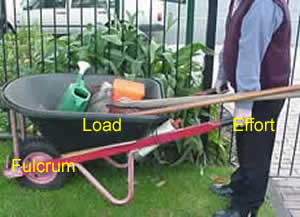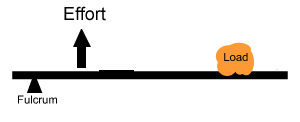|
| No better example
exists of a lever than the simple see-saw. A lever is nothing more than
a solid object that has a turning point, called the fulcrum, a place along
its length where we apply a force, known as the effort and another point
along its length where we lift some object, known as the load. |
see-saw |
| So a lever has three things
associated with it the fulcrum, effort and load. At the same time as we
push down on one end of the lever the other end pushes up on the load. |
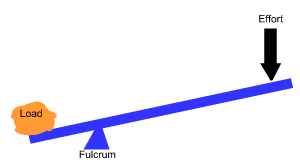 |
| The closer we move the fulcrum
to the load the easier it is to lift. We seem to put in a small force at
one end and get a larger force out the other end. The closer the fulcrum
is to the load the less distance it will move. If we had a long crow-bar
and used it to lift a heavy rock the distance we would have to push the
lever down would be much greater than the distance the rock moved. This
is the trade-off for multiplying the force. |
Moving a rock with a crow-bar |
| There are three
possible ways to set up a lever. |
| A first order lever has the
fulcrum between the load and the effort. Much like our see-saw. |
|
A second order lever has
the load between the effort and the fulcrum.
|
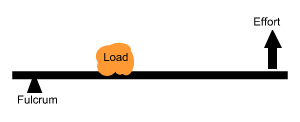 |
| An example of this type of lever
is the wheel barrow. |
|
| A third order lever has the
effort between the load and the fulcrum. |
|
| An example of this type of lever
are tweezers and the many bone attachments in our bodies. This kind of arrangement
has the effort very close to the fulcrum, instead of multiplying the force
we multiply the distance. |
|
Arguably one
of the most famous levers is the Orbiter's arm, as shown on the right.
Is this lever designed to maixmise force for lifting heavy sattelites
from the cargo bay of the Orbiter? Explain. |
|
|
|
| |

